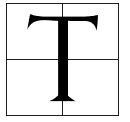Member-only story
The Tramways of Italy — History, Atmosphere, and Folklore
Hundreds of tram rails used to cross dozens of Italian cities for decades. Now they’re mostly gone, but stories, movies, and songs remain.

 Tram, streetcar, trolley, these are names for basically the same transportation method of a ‘car’, or ‘coach’, traveling along rails, the ‘tramway’, mostly for localized public transportation and sharing the road with cars. There aren’t many left around the world.
Tram, streetcar, trolley, these are names for basically the same transportation method of a ‘car’, or ‘coach’, traveling along rails, the ‘tramway’, mostly for localized public transportation and sharing the road with cars. There aren’t many left around the world.
Most trams are characterized by a slow speed and most are limited to city boundaries, although they can connect different cities at times. For longer routes, the transportation is called a light-rail, which is mostly a modern term for a somewhat “upgraded” streetcar. The light rail is halfway between a tram and a train. Its main differences are the possibility of higher speeds and street-level entrances, while the tram has raised entrances. Also, the light rail often has designated lanes or roadways. Both are for passenger-carrying duties, really, there is no huge difference between a streetcar and a light rail.
Of the hundreds of trams that were running in hundreds of Italian cities between the second half of the 1800s and the first half of the 1900s, fifteen are left in eight different regions. Most people under sixty might have never seen one because even if a city technically still has one, it might be covering only a specific, and maybe small, area.
A brief history of the tram
The world’s first tram appeared on 11 September 1795 in Derbyshire, England, for industrial purposes. It worked through horsepower as all trams did in the beginning. It was basically an upgrade from the horse-drawn carriages, known as ‘omnibus’. Rails allowed for safety, increased size, hence capacity, and better management.

In Italy, the first tram-line appeared in Turin in 1872 and operated within the city. The first suburban horsepower tramway appeared in 1876 connecting Milan to Monza. Immediately after the Italian Unification and with the…
